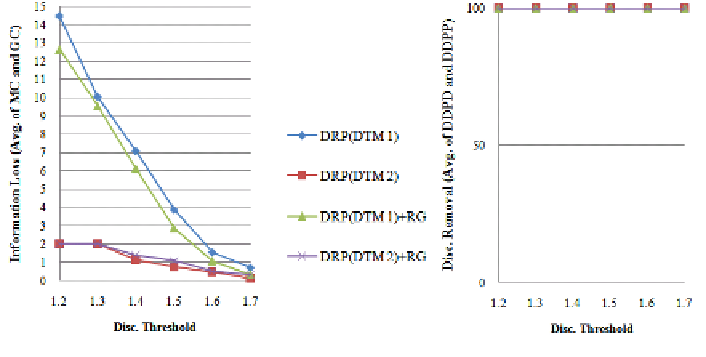Database Reference
In-Depth Information
MC and GC should ideally be 0%. However, MC and GC may not be 0% as a
side-effect of the transformation process.
13.7 Experimental Results
This section presents the experimental evaluation of the proposed direct discrimi-
nation prevention approaches. We use the German Credit Dataset (Newman
et al.
1998) in our experiments, since it is a well-known and frequently used dataset in
the context of anti-discrimination. This dataset consists of 1,000 records and 20
attributes (without class attribute) of bank account holders. For our experiments
with this dataset, we set
DI
s
= {Foreign worker=Yes, Personal Status=Female and
not Single, Age=Old} (cut-off for Age=Old: 50 years old).
Figure 13.3 shows at the left the degree of information loss (as average of MC
and GC) and it shows at the right the degree of discrimination removal (as average
of DDPD and DDPP) of direct discrimination prevention methods for the German
Credit dataset when the value of the discriminatory threshold α varies from 1.2 to
1.7, the minimum support is 5% and the minimum confidence is 10%. The number
of direct
discriminatory
rules extracted from the dataset is 991 for α =1.2, 415 for α
=1.3, 207 for α =1.4, 120 for α =1.5, 63 for α =1.6 and 30 for α =1.7, respectively.
Fig. 13.3
Left: Information loss, Right: Discrimination removal degree for direct discrimi-
nation prevention methods for
α
in [1.2, 1.7]. DRP(DTM
i
): Data transformation method
i
for DRP; RG: Rule Generalization.
As shown in Figure 3, the degree of discrimination removal provided by all me-
thods for different values of α is also 100%. However, the degree of information loss
decreases substantially as α increases; the reason is that, as α increases, the number
of
discriminatory
rules to be dealt with decreases. In addition, as shown in Figure 2,
the lowest information loss for most values of α is obtained by DTM 2 for DRP.

Search WWH ::

Custom Search